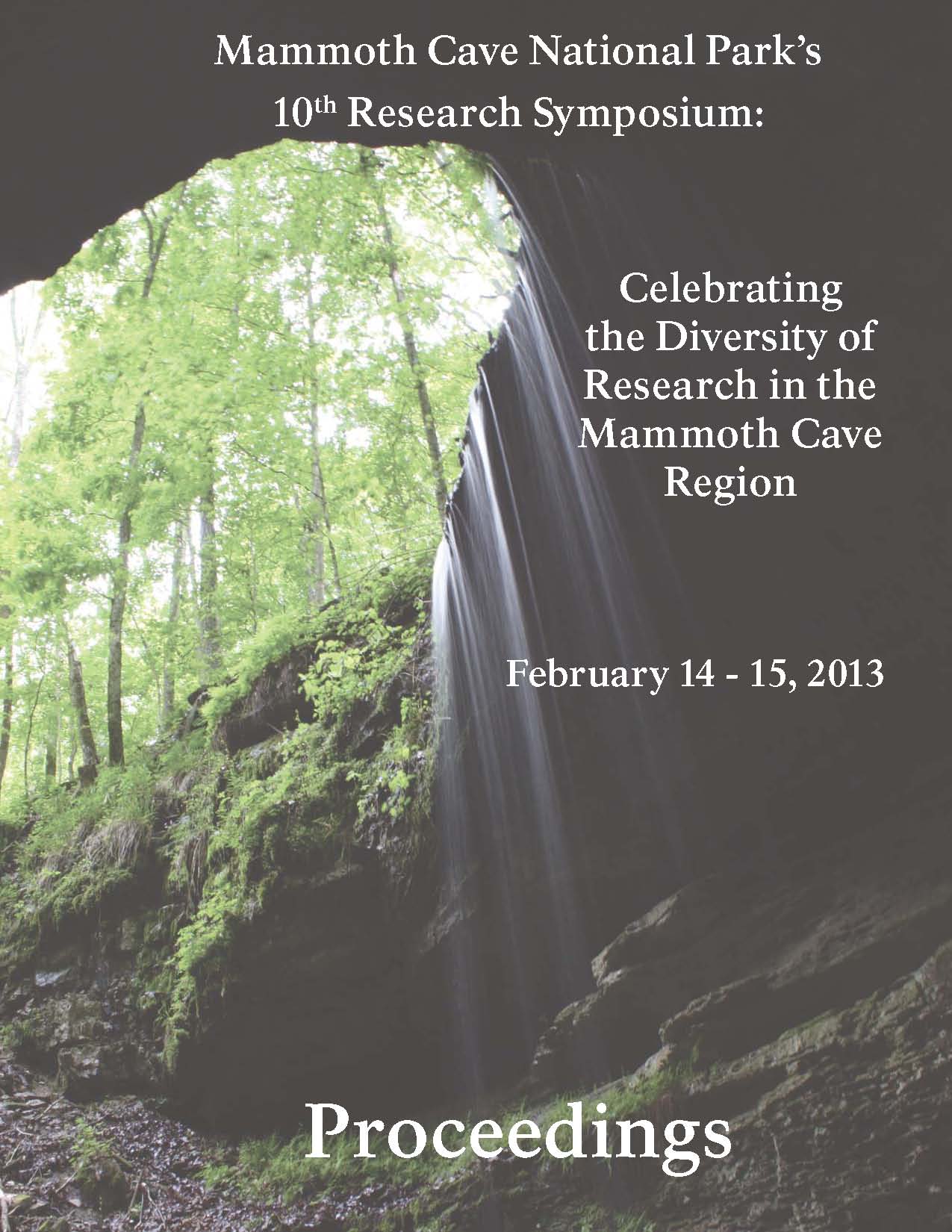Start Date
14-2-2013 2:50 PM
Description
Freshwater mussels are the most imperiled group of freshwater invertebrates globally. Recent research suggests a better understanding of mussel feeding ecology may facilitate and improve conservation efforts. The use of stable isotopes is becoming an increasingly common method to study aquatic food webs. Carbon (C) and nitrogen (N) are two of the most frequently employed elements in food web studies. Differences in natural abundance of 13C/12C can indicate which food sources are the basal sources of carbon incorporated into a consumer’s tissue, while the ratio of 15N /14N provides a method of assessing trophic position within a food web. Attached macroalgae, including the genus Cladophora, may be the dominant primary producers in running water systems. Cladophora, however, has not yet been indicated as a prominent assimilated food source for freshwater mussels. The overall purpose of this study was to assess if the diet of two common Green River mussel species, Amblema plicata (Say) and Elliptio dilatata (Rafinesque) were influenced by the seasonal change in availability of Cladophora during a summer-autumn rapid growth period. Two specific questions were asked: 1) Are the assimilated diets different between control and treatment areas, and 2) are the assimilated diets influenced by differing Cladophora levels across the study period? A mesocosm approach was employed in order to manipulate Cladophora levels within a treatment area. Seventy-two mussels, 36 each species, were sampled across four months, twice between control (= reachscale, heavy Cladophora cover) and treatment (= local-scale removal of Cladophora) areas. The freeware program, IsoSource, a concentration-weighted linear mixing model, was used to determine the potential contribution of potential food sources to the diet of both mussel species. IsoSource revealed that Cladophora was the primary assimilated food source for both species across the study period. Although assimilated diets were not different between control and treatment areas, diets were, however, influenced by Cladophora availability across time. The results of this study indicate that, during bloom conditions, Cladophora is the primary carbon source for both A. plicata and E. dilatata and may form the base of food webs in the upper Green River.
Recommended Citation
Yates, Jennifer; Grubbs, Scott; Meier, Albert; and Collyer, Michael, "Influences of a Cladophora Bloom on the Diets of Amblema plicata and Elliptio dilatata in the Upper Green River, Kentucky" (2013). Mammoth Cave Research Symposia. 16.
https://digitalcommons.wku.edu/mc_reserch_symp/10th_Research_Symposium_2013/Research_Posters/16
Included in
Animal Sciences Commons, Forest Sciences Commons, Geology Commons, Hydrology Commons, Other Earth Sciences Commons, Plant Sciences Commons
Influences of a Cladophora Bloom on the Diets of Amblema plicata and Elliptio dilatata in the Upper Green River, Kentucky
Freshwater mussels are the most imperiled group of freshwater invertebrates globally. Recent research suggests a better understanding of mussel feeding ecology may facilitate and improve conservation efforts. The use of stable isotopes is becoming an increasingly common method to study aquatic food webs. Carbon (C) and nitrogen (N) are two of the most frequently employed elements in food web studies. Differences in natural abundance of 13C/12C can indicate which food sources are the basal sources of carbon incorporated into a consumer’s tissue, while the ratio of 15N /14N provides a method of assessing trophic position within a food web. Attached macroalgae, including the genus Cladophora, may be the dominant primary producers in running water systems. Cladophora, however, has not yet been indicated as a prominent assimilated food source for freshwater mussels. The overall purpose of this study was to assess if the diet of two common Green River mussel species, Amblema plicata (Say) and Elliptio dilatata (Rafinesque) were influenced by the seasonal change in availability of Cladophora during a summer-autumn rapid growth period. Two specific questions were asked: 1) Are the assimilated diets different between control and treatment areas, and 2) are the assimilated diets influenced by differing Cladophora levels across the study period? A mesocosm approach was employed in order to manipulate Cladophora levels within a treatment area. Seventy-two mussels, 36 each species, were sampled across four months, twice between control (= reachscale, heavy Cladophora cover) and treatment (= local-scale removal of Cladophora) areas. The freeware program, IsoSource, a concentration-weighted linear mixing model, was used to determine the potential contribution of potential food sources to the diet of both mussel species. IsoSource revealed that Cladophora was the primary assimilated food source for both species across the study period. Although assimilated diets were not different between control and treatment areas, diets were, however, influenced by Cladophora availability across time. The results of this study indicate that, during bloom conditions, Cladophora is the primary carbon source for both A. plicata and E. dilatata and may form the base of food webs in the upper Green River.


Comments
Abstract only